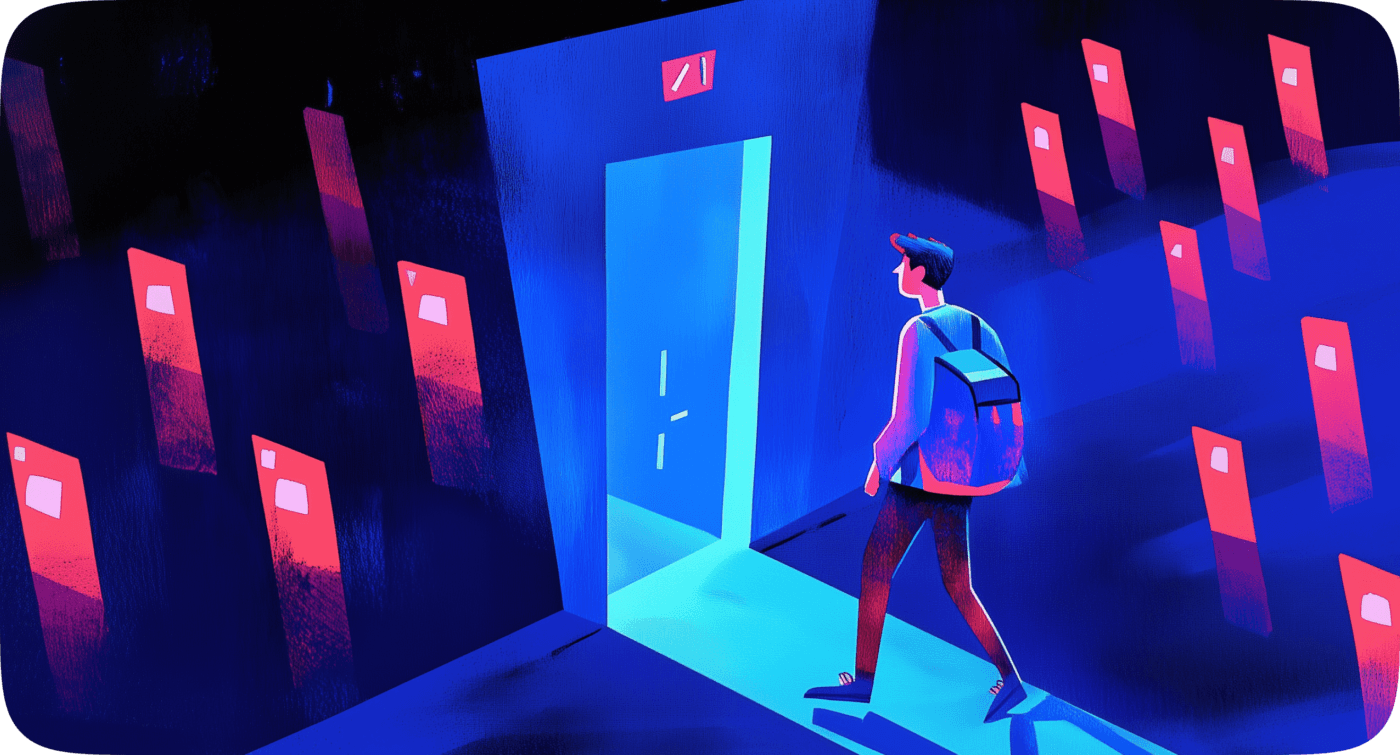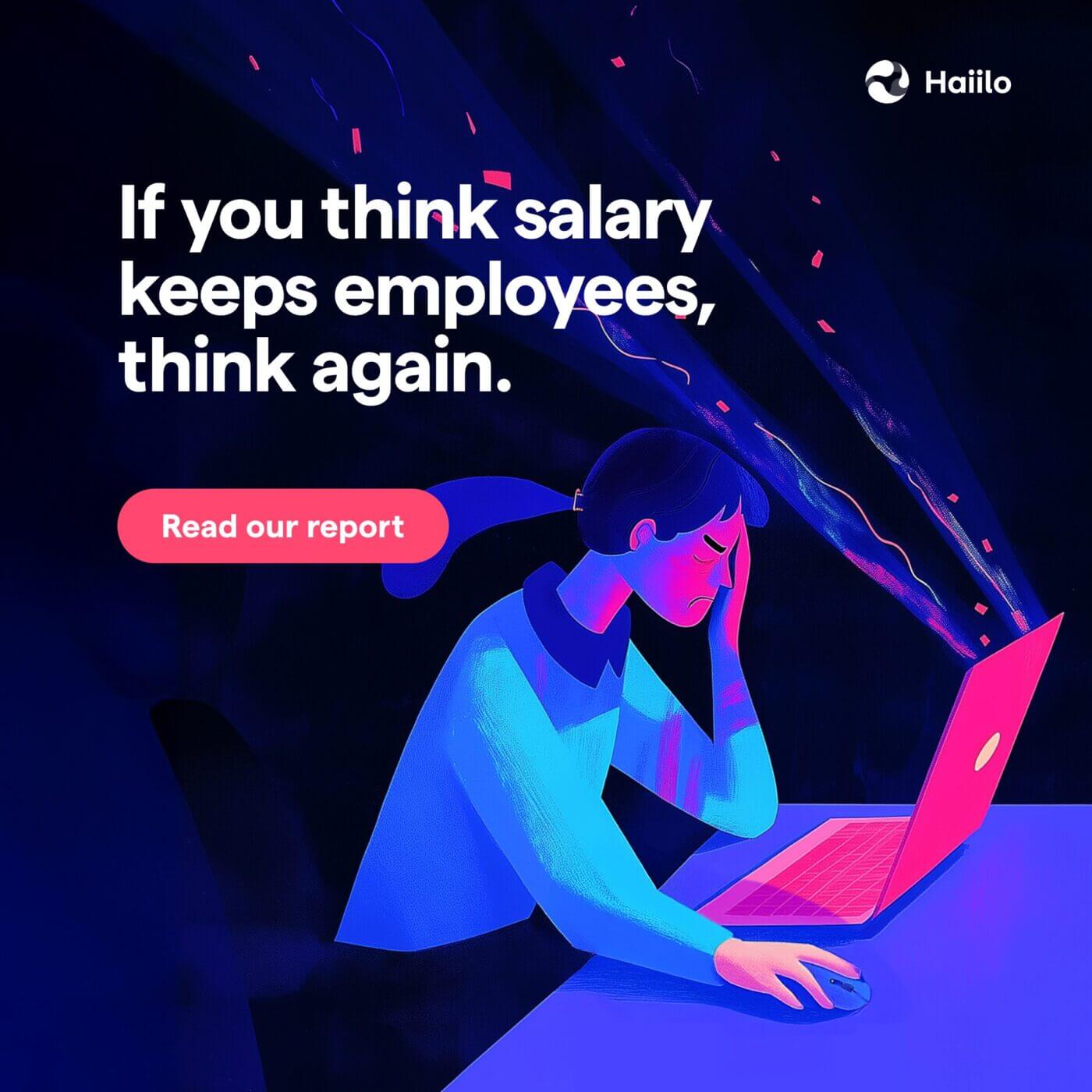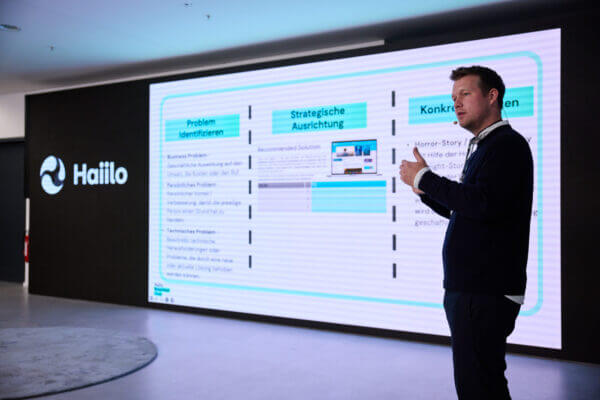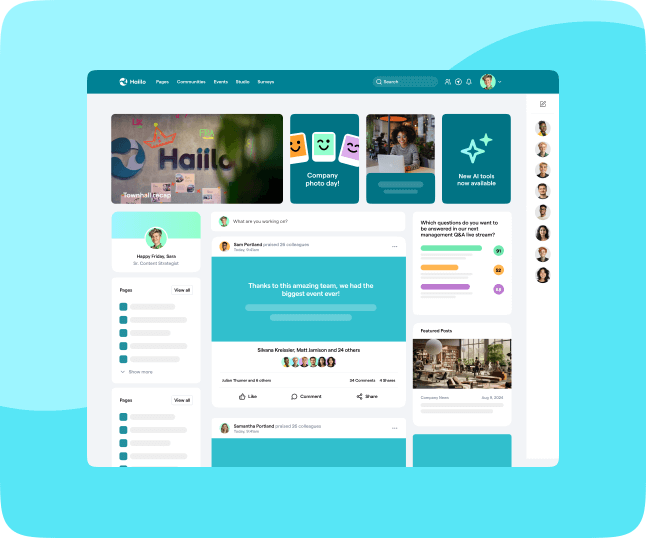Investment in employee development isn’t some nice-to-have; it’s essential for retention.
But don’t just take our word for it, just look at the data. A massive 94% of employees would stay longer if their company invested in their learning and development (LinkedIn).
That said, many organizations are not providing the right tools or resources to support learning and development, with devastating effects.
When growth stalls, people leave
Imagine a fast-growing tech company beloved by customers worldwide. All is well to outsiders, but beneath the surface, employees are growing frustrated. Requests for advanced training and certifications are routinely ignored, and as the tech landscape evolves, staff feel they’re falling behind.
Alarm bells start ringing when top performers begin leaving for competitors with robust learning programs. Senior developers, marketers, and rising stars depart, taking expertise with them. The remaining employees are overworked and unprepared.
The company’s reputation crumbles as negative reviews spread. New hires struggle to integrate, turnover soars, and innovation stalls. By the time leadership acts, competitors have poached their talent and market position, leaving our company fading into obscurity.
The lesson: Failing to invest in employee growth isn’t just a missed chance – it’s a direct path to high turnover, disengagement, and lost competitive edge. Neglecting development doesn’t save costs; it guarantees bigger losses.
The cost of poor L&D
When organizations neglect learning and development, the consequences go far beyond employee dissatisfaction.
Consequences include:
- High turnover: Around 63% of workers who quit their jobs cited a lack of opportunities for advancement as a major reason for their departure. (Pew Research Center)
- Low engagement: Employees who feel stagnant in their roles often disengage, leading to a 20% drop in productivity and lower morale. (Gallup)
- Loss of top talent: High performers are the first to leave when their potential isn’t nurtured. Losing top talent not only disrupts teams but also hands a competitive advantage to rivals.
- Innovation stagnation: Without new skills or perspectives, you risk falling behind. Lack of L&D limits creativity and innovation, making it harder to adapt to market changes.
Failing to prioritize learning and development doesn’t save money – it costs far more in lost talent, productivity, and potential.
What good employee development looks like
Good employee development empowers individuals to grow, aligns their skills with company goals, and builds a culture of continuous learning. It drives engagement, retention, and innovation. And ultimately, it creates an environment where top talent want to stay.
Key indicators of a strong development program include:
- Personalized growth
Tailored learning paths align with individual goals and organizational needs - Leadership development
Programs prepare high-potential employees for leadership roles - Emerging skills training
Focus on equipping employees with tools for future industry trends - Ongoing feedback
Regular check-ins and goal setting ensure progress and accountability - Recognition of growth
Celebrate achievements with certifications, promotions, or skill-based rewards
Why L&D matters: the numbers don’t lie
- Retention: 94% of employees say they would stay longer at a company that invests in their learning and development. (LinkedIn)
- Engagement: 92% of employees say well-planned training programs have a positive effect on their engagement. (Zippia)
- Performance: Employees who feel supported in their growth are 37% more likely to exceed performance expectations. (PwC)
- Recruitment: 88% of Gen Z employees prioritize finding a stable employer that offers opportunities for personal and professional growth. (Times)
- Profit: Organizations with comprehensive training programs enjoy a 24% higher profit margin than those that spend less on training. (Shift)

The death of the “loyalty contract”Once upon a time, employees were expected to stay in their lanes – perform, comply, and climb the corporate ladder one predictable rung at a time. In exchange, employers offered stability, a steady paycheck, and maybe a gold watch after 30 years of service. That’s all gone now, swept away by seismic shifts in workplace culture and expectations. Today’s workforce isn’t interested in staying put; they’re interested in moving forward. And if their organization doesn’t offer the tools, resources, and opportunities to grow, they’ll find one that does. The loyalty contract of the past has been replaced by something more fluid: the growth contract. This shift isn’t just a generational quirk, it’s a product of our culture. In a world where lifelong learning is celebrated, stagnation feels like a failure. The rise of remote work, flexible careers, and digital-first cultures has amplified this expectation. Employees now ask, “What are you doing to help me grow?” And they expect an answer. Research backs this up: 94% of employees say they’d stay longer at a company that invests in their growth. But this isn’t just about offering a library of online courses or a mentorship program. It’s about designing an environment where growth is embedded in the DNA of your workplace. The new reality of L&D Companies must embrace a culture where learning is constant and adaptive. Employees aren’t looking for generic “career paths” anymore. They want:
The digital workplace has given employees unprecedented visibility into what’s possible elsewhere. Why stay somewhere stagnant when growth is just a click away? Retention is no longer about handcuffing people to your organization with perks or fear of change. It’s about creating a workplace where people want to be because they can see themselves growing there year-after-year, challenge-after-challenge. |
What’s next?
Here’s where digital tools shine. By creating centralized learning hubs, tracking employee development, and offering personalized growth plans, companies can:
- Equip employees with the skills needed for tomorrow’s challenges
- Show a genuine commitment to career growth
- Reduce turnover by fostering loyalty and a sense of investment
Your roadmap looks something like this:
1. Show a genuine commitment to career growth
When employees see their potential clearly mapped out, they feel valued.
An intranet enables organizations to offer structured career pathways, mentorship connections, and learning opportunities that aren’t buried in bureaucracy. They’re visible, actionable steps that show a company is serious about investing in its people.
2. Get fast, accurate answers with AI-powered search
Searching for answers shouldn’t be a stumbling block.
An intranet with AI search removes the guesswork by delivering precise, role-specific results instantly. Whether it’s a document, a colleague’s contact details, or project updates, employees can access what they need without frustration.
3. Facilitate knowledge sharing and collaboration
By offering shared workspaces, discussion boards, and accessible resources, the right intranet creates an environment where employees can learn from each other and collaborate effectively. Whether teams are in the same building or across the world, it becomes a space where knowledge flows freely.
Conclusion
The future of work belongs to organizations that prioritize growth – not just at the company level, but for every individual within it. Employees today expect more than static roles and outdated resources, they demand environments where their potential is nurtured, their skills are sharpened, and their value is recognized.
Digital tools like intranets make this transformation possible. By centralizing learning opportunities, fostering collaboration, and streamlining access to information, these tools empower employees to take ownership of their growth. They also send a powerful message: this organization is invested in your future.

How can Haiilo help?
The best talent won’t wait for growth. Haiilo empowers HR teams to build a connected, motivated workforce through authentic communication and real-time insights.
We combine social intranet, communications, advocacy, employee listening, and actionable insights in one seamless experience.
- Create an environment where employees feel recognized and connected
- Make every employee feel valued with personalized, relevant updates
- Reduce tool fatigue with seamless integrations into your HR tech stack
- Gain real-time sentiment data to track engagement and well-being
The Haiilo impact:
- 67% better insights into employee needs
- 300% ROI through improved retention & productivity
- 21% higher profitability in engaged workplaces
Turn employee engagement into your competitive advantage.






